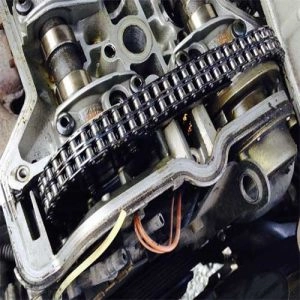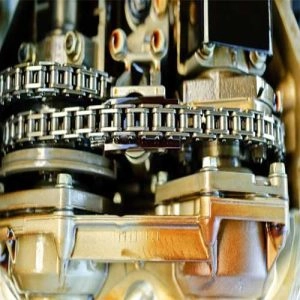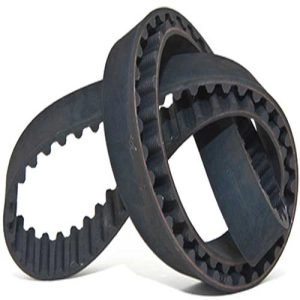All parts of a car work together seamlessly to ultimately achieve the final result, which is moving the car to the desired destination. No part can be ignored, regardless of its role or size. A prime example of the importance of teamwork and integration is how the engine's timing chain transfers motion from the crankshaft, which helps push the piston arms inside the combustion chamber, to the timing shaft and the camshafts that operate the cylinder head valves. These valves send fuel into the combustion chamber and expel the gases produced by combustion from the exhaust.
What is the engine timing chain?

The engine chain, also known as the camshaft chain, is a part of the car responsible for transferring motion from the crankshaft to the camshaft. It also ensures that this movement is synchronized during its rotation. The importance of this synchronization is that it helps to activate the cylinders at the right time, maintaining the proper operation of the engine. In addition to this, the engine chain needs to meet certain conditions to perform its tasks properly, such as being placed to work within plastic channels. Tensioners must also be provided to prevent it from slackening. Generally, a car's engine may contain more than one camshaft chain, depending on the type of car. Some cars have an engine that carries two chains, and others have an engine that carries three.
The difference between the timing chain and the timing belt.

Many people may wonder about the differences between the engine chain and the timing belt, as some may confuse the two, especially since they are somewhat similar in their appearance. However, in reality, there are clear differences between them that can be used to distinguish them, and the most prominent of these differences are:
The engine chain contains strong metal links that contribute to its ability to withstand high temperatures, in addition to its long lifespan and its ability to perform its tasks, thus taking advantage of its services for a long period. Generally, there is no need to replace it except when overhauling the engine. On the other hand, the timing belt is quite the opposite of the engine chain, as its lifespan is short and it needs to be replaced from time to time, given that it wears out more with the passage of time. In general, it is advised to replace it every 5 years, or after traveling a distance not exceeding 100,000 kilometers.
In addition to what has been mentioned, there are other indicators and signs that distinguish between the engine chain and the rubber belt. The most prominent of these is that the engine chain is heavy, makes loud noises, and consumes large amounts of fuel, while the rubber belt is characterized by its light weight, quiet sound, and does not require large amounts of fuel.
Despite the rarity of replacing the engine chain, its replacement cost is higher than the cost of replacing the timing belt, especially considering the need to change the plastic channels and chain tensioners alongside the chain. In addition, the engine chain needs to be lubricated from time to time.
Generally, the engine chain is found in most high-performance engines, which have high pressure due to the power of these engines and their need for precise synchronization, while the timing belt is found in economical engines.
Also read:SAS Steering Sensor: Top 3 Signs Indicating Its Damage
Signs indicating damage to the engine's timing chain.

In this paragraph, we will highlight the top 3 signs that can indicate damage to the engine chain, which are:
Engine damage
The chain is attached to the pulleys that drive the crankshaft and camshafts, but sometimes the chain slips or loosens from one of the camshaft pulleys. This can cause the cylinder to open or close earlier than necessary, which can have disastrous results and cause serious damage to the engine if it is not replaced promptly. In addition to this, the chain’s separation from the pulleys can cause a malfunction in the synchronization between the crankshaft and the camshafts. This could cause the pistons to malfunction and the valves to break. Therefore, if your car's engine has suffered significant damage without an apparent cause, it could be due to a malfunction in the engine chain.
The engine is making noises.
Certainly, a malfunction in any part of the car will affect its operation. A suitable example of this is how the wear of plastic channels and failure of tensioners affect the timing belt. These issues can cause slack in the timing belt, which in turn leads to engine vibration and unusual noises when the engine is started and when it slows down.
The appearance of iron particles in the engine oil.
If you change the engine oil in your car and find iron filings in the old oil, it could be an indication that the engine's timing chain is damaged, because the wear of the timing chain can cause the appearance of iron in the engine oil. However, generally speaking, the presence of iron in the oil does not necessarily mean that the timing chain is damaged. The cause might be insufficient oil flow to the engine, or damage in one of the other parts.

Comments